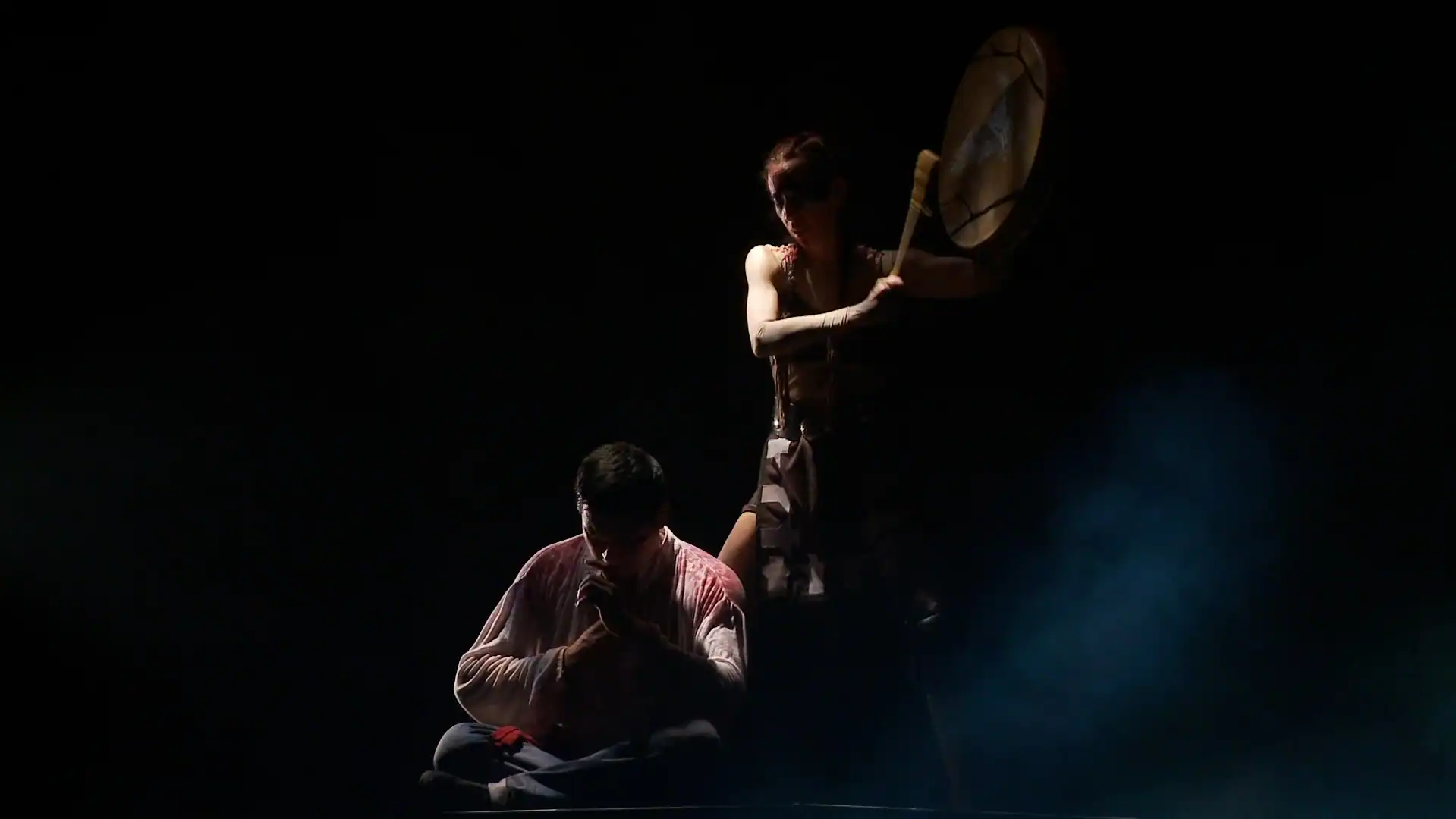Unreserved47:23Lessons in Comedy and Tragedy
On August 19th, 1907, just after 5:30 p.m., a bell rang to let a crew of construction workers know it was time to pack up their belongings and finish for the day. They were building a bridge that would connect Quebec City with the City of Levis across the St. Lawrence River. But just minutes after the bell rang, there was a loud crack, and the 400-foot structure fell to the bottom of the St. Lawrence river.
“It was Canada’s greatest workplace disaster [at the time],” says Connie Meloche, a historian and key organizer of the Quebec bridge memorial.
Seventy six lives were lost that day; 33 of them were Mohawk men from Kahnawake First Nation, a small community of roughly 2,000 people about 300 kilometres from Quebec City. Meloche, who is also from Kahnawake, said the impact on her community was “disastrous.”
For the anniversary, a concrete memorial displaying the names of all the victims was unveiled on the Levis side, and in Kahnawake First Nation, a steel replica of the ill-fated bridge.
The event is notorious among engineers. It is studied as a failure in design. The site of the rebuilt bridge has become a pilgrimage for engineers to confront the deadly consequences of human error. The wreckage emphasizes the risk of engineers putting ego and ambition above safety.
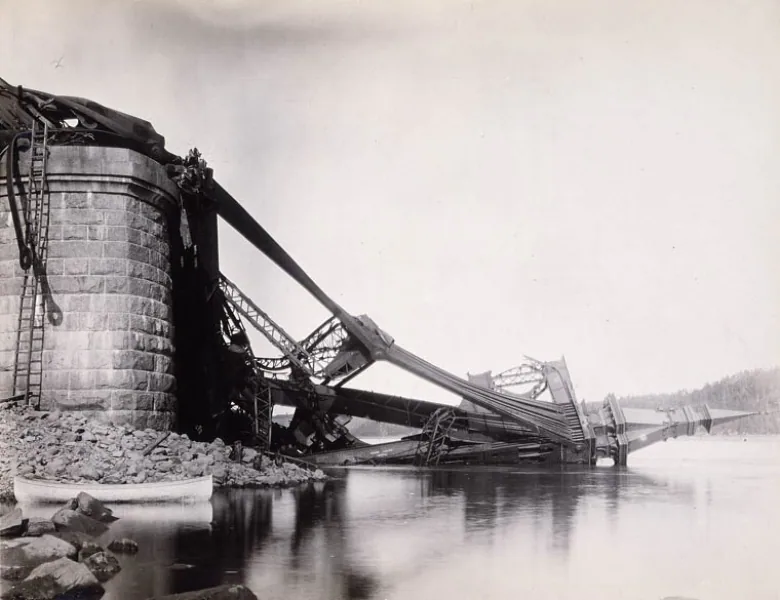
Less written or talked about is the human cost of this event, particularly for the small community of Kahnawake.
But choreographer Barbara Kaneratonni is changing that with her multidisciplinary theatre production Sky Dancers, recently performed at Toronto’s Harbourfront Centre. In it she explores the lasting impact of the 1907 Quebec Bridge disaster from a Mohawk perspective.
“They were real people,” she said. “They were our brothers, our fathers, our cousins, our sons.”
For Kaneratonni this story is a personal one. Though she lives in Montreal today, her family comes from Kahnawake and her great grandfather was one of the ironworkers who lost their lives that day.
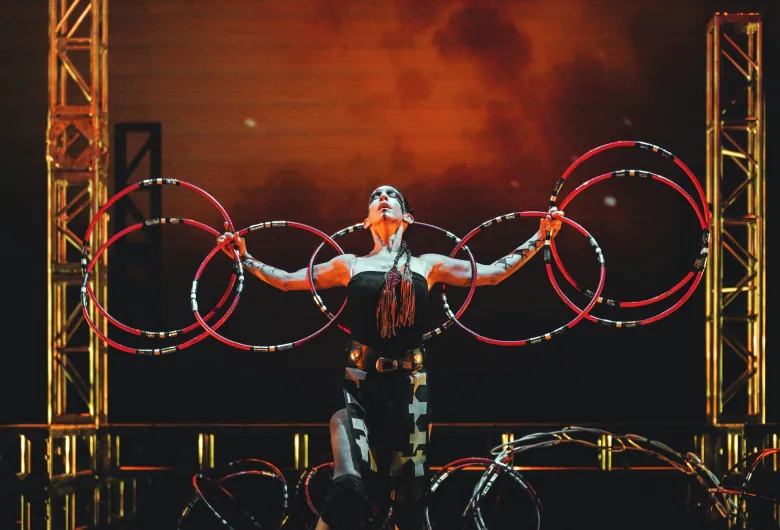
A culture of ironwork in Kahnawake
Around the time of the disaster, ironwork was becoming a popular job for men from Kahnawake. Mohawk men were essential to construction during that time.
“It started in the late 1800s, when the bridge from Kahnawake to Montreal was being built,” Kaneratonni told Unreserved host Rosanna Deerchild. Originally the engineers thought they would only hire the Indigenous men only as day-labourers to unload materials. But the Mohawk men soon became known for their agility and fearlessness when walking across high iron beams. This led them to become riveters, who would fasten parts of the bridge together from extraordinary heights.
“It started a culture of ironworkers” in Kahnawake she said. “[They] made so many contributions to building the skylines of North America [and] people don’t always think about that.”
WATCH | Dancers perform breakdance-inspired choreography in ‘the ironworkers’ scene from Sky Dancers.
That culture of Ironwork comes to life in Sky Dancers‘ ironworker scene. Industrial beats that incorporate the sound of metal being hammered play over top men singing in Mohawk, while the dancers perform a breakdance-inspired choreography.
Kaneratonni said she really wanted to capture the attitudes of the Ironworkers. Ironwork is very athletic, she said, which is why she added a lot of acrobatics.
“It is highly physical and dangerous work,” she said, adding that she wanted “a dance vocabulary that does the same.”

Signs of Trouble
The construction of the Quebec bridge was borne out of Quebec City’s need to be competitive in trade. The St. Lawrence River was the only channel for trade during the summer. In the winter the city was completely cut off until the river froze over and a precarious ice bridge was used.
The new bridge was meant to be a symbol of engineering excellence and innovation, the longest of its type in the world. However, in the months leading up to its collapse, there were multiple construction issues and warning signs that the structure was not sound.
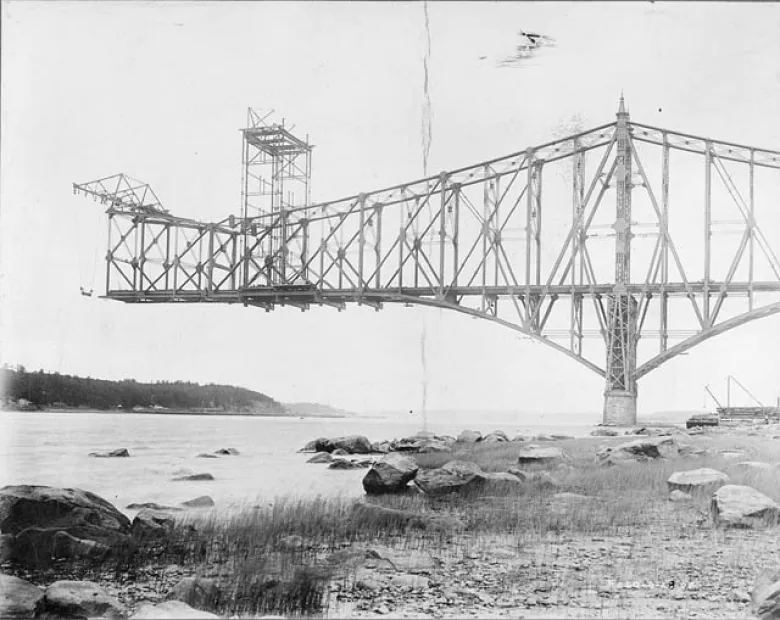
Edward Hoare was hired as chief engineer despite having never worked on a large-scale bridge before. To make up for Hoare’s lack of experience, Theodore Cooper was brought on as a consultant. At the time Cooper was in his 60s, based in New York, and in poor health. A young engineer named Norman McLure was hired to be Cooper’s eyes and ears at the bridge.
Workers and supervisors noticed a bend in the beams and chords of the bridge, and that predrilled holes did not line up at the time of assembly. Safety at the construction site became such a concern that workers held a three-day strike to protest the conditions.
When McLure raised these concerns, Cooper insisted there was no fundamental issue in the design of the bridge, instead he blamed the manufacturing of the materials despite never once visiting the construction site.
But chords continued to bend and break so much that on August 27, one construction foreman halted the construction. Tragically, he changed his mind, and within days the bridge collapsed.
Kaneratonni said “men were stuck in the twisted metal, some still alive and calling for help…. It was a long process after, trying to save [the workers] and not being able to.”
The Quebec Bridge would collapse another time in 1916 due to poor design, killing 13 workers. It was eventually completed in August of 1919.
The ripple effects
The event in 1907 had ripple effects that lasted for generations. “It affected the whole village,” she said.
Some children were brought to residential schools because of the bridge collapse. “The church was pressuring the women saying, ‘you can’t take care of your children anymore, because you lost the breadwinner,’ you know, so it was like a double tragedy.'”
Kaneratonni captured this aspect of the story in a chilling scene in Sky Dancers. Voices chant, “How many children will you be able to send? How many boys? How many girls?”
She did not write those lyrics herself; Kaneratonni took them from letters found in Kahnawake Cultural Centre. The letters were from residential school missionaries pleading for children from Kahnawake to be sent to residential schools.
“When we were working on this final version, [it was] around the time when they started discovering all the graves of the children, the unmarked graves, in the past year.We realised this would take a whole new weight.”
She said they took a lot of care with this part. “We smudged often during that scene when we had to.”
WATCH | Multimedia incorporates images of the dead in a scene called ‘The aftermath’
The resilience of a community
“The men who died left behind 24 widows and 53 children that day. It splintered the community” Meloche explains.
Kaneratonni said that’s when the women decided that they were “not going to send all our men to the same job anymore.” After that the ironworkers started to branch out more to job sites into the United States.
But she is adamant that this story is about more than just tragedy. “I want to show the resilience and the strength of our community after surviving.”
“They keep going and that is something to be proud of that our people keep going.”
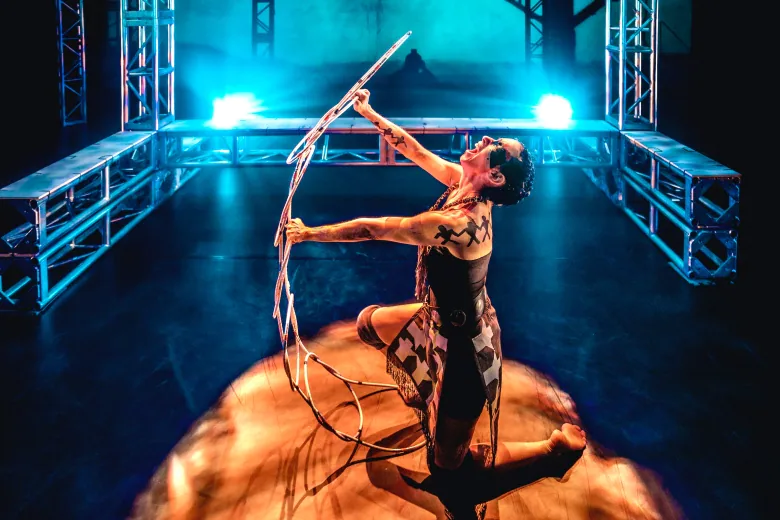
Barbara Kaneratonni interview produced by Kim Kaschor.
Reference-www.cbc.ca

